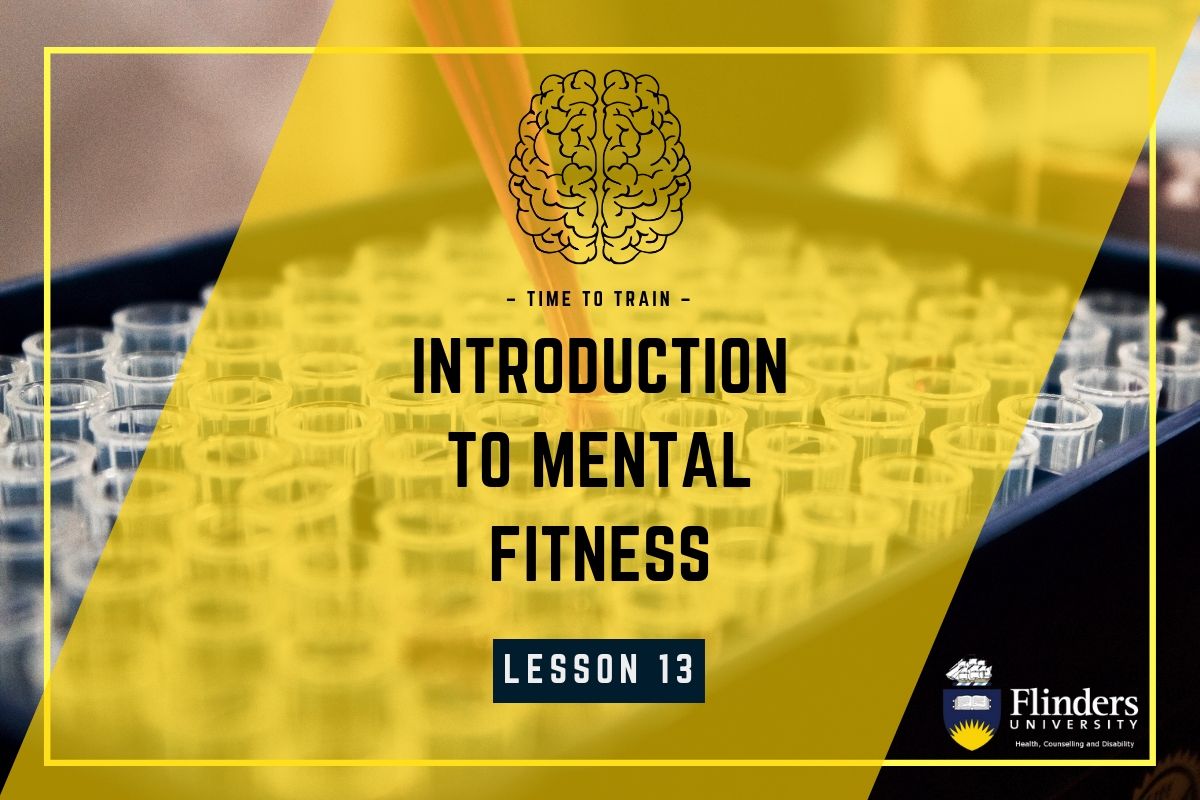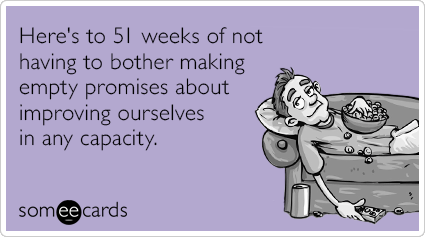
Greetings and welcome to Lesson 13 of my ‘Introduction to Mental Fitness’ course. If you are new to the course, check out the introductory post first.
Also a quick reminder that for Flinders students, these lessons can found on our FLO site as well, where you can chat about these lessons privately with other students, as comments left on this blog are visible to the general public.
Welcome to Lesson 13 of the Introduction to Mental Fitness Course.
Since Lesson 10, I’ve been encouraging you to make a small lifestyle change as a mental fitness experiment. I’ve been using ‘spend more time using my standing desk‘ as my own little mental fitness experiment.
The reason is there is no better way to learn about the process of building mental fitness than actually doing it.
So far, in the process we’ve explored:
- picking a small lifestyle change
- acquiring knowledge about that lifestyle change
- setting some goals for how you’d like to implement that lifestyle change
- developing the necessary skills to perform the lifestyle change
I’ve been modelling the process by making a change in my own life……
- picking a small lifestyle change (use my standing desk more often)
- acquiring knowledge about that lifestyle change (I did a quick scope of the literature and found the evidence for standing desks is limited)
- setting some goals for how you’d like to implement that lifestyle change (I set myself the goal of 5 hours standing per working day)
- developing the necessary skills to perform the lifestyle change (I did a quick task analysis and discovered it is the incidental modifications you need to make to your desk that are the most challenging, not the use of the desk itself)
Today I want to cover the process of self-experimentation. This is, in fact, a topic I’ve covered previously on the blog.

What is self-experimentation?
Using yourself as a test subject to try new things in life.
Taking a more scientific approach to making changes in your life.
Experimenting with different lifestyle modifications to determine which are most beneficial.
It is a philosophy of self-improvement that treats lifestyle improvement as hypotheses where the goal is to observe the process and outcomes of implementing different lifestyle changes, rather than trying to achieve a pre-specified outcome.
Why self-experiment?
We all have room for improvement and there is no shortage of people (myself included) telling you how you should live your life. You can quickly get overwhelmed by the number of things that people say we ‘should’ be doing.
Self-experimentation puts the power back in your hands as you take charge of determining what lifestyle elements work for you and which don’t.
The way I see it, science, religion, philosophy and shared human experiences give you clues as to what ‘might’ make your life better. For example, in the area of health, science works by showing that certain lifestyle changes benefit (on average) those who use them. This helps you narrow down the range of things that might be helpful.
But finding out whether a given recommendation will be helpful to you requires self-experimentation. For example, there is scientific evidence that mindfulness meditation is helpful for medical students – but any given medical student however would need to trial it for themselves first before determining if it is helpful to them.
I think self-experimentation is a helpful mental stance from which to approach making changes in your life. Instead of approach these changes with a bunch of pre-conceived ideas about how it will unfold, you instead approach these changes with a willingness and openness to simply observing and recording what happens. You put aside expectations of “getting it perfect” and treat your life like a laboratory in which you’ll test all sorts of things over your lifetime.
Self-experimentation is a mindset that seeks to remove the pressure that something should or should not work. The goal is to implement and collect data along the way to determine if something is helpful.
How do you self-experiment?
It is possible to create pretty complex self-experimentation routines, and some people end up becoming very addicted to the process of quantified self, but here are the basic principles.
- Decide on the lifestyle change that is being tested. This might be a new study strategy, diet change, or a new way of thinking about something. Set clear goals.
- Acquire relevant knowledge and skills (as per previous lessons) on the lifestyle change. Understand why you have picked this particular change. Usually it is because you’ve made an association between the lifestyle change and some positive outcome. If the lifestyle change involves a skill you don’t have, engage in appropriate instruction and practice to get reasonably proficient in the skill. Observe the early impacts of learning and practising the new skill.
- Set a time period during which you’ll engage in the lifestyle change and observe its impacts. If it is a daily behaviour, then a couple of weeks might be fine. If it is a weekly behaviour, then you might need to stretch this out to a few months.
- Determine the frequency – how often will you engage in the behaviour?
- Put processes in place to support you making the change. This might include reminders or prompts to engage in the behaviour. For example, if you want to increase your exercise time through daily walks, you need to ensure you have things set up to make this possible – right clothes, scheduled time in diary, a reminder or alarm, a designated walking path.
- Set up monitoring systems to track a) whether you engage in the behaviour as you planned and b) what the impacts of the behaviour are. This monitoring process can get quite detailed if you are using forms or apps to monitor stuff. Admittedly, I tend to be quite informal in this process. Take my standing desk change for example. I monitor whether I am doing the 5 hours per working day, but then I simply reflect at the end of the week whether I think it is has been helpful. I’ve noticed that it improves shoulder and neck pain, but increases leg, foot and lower back pain. I enjoy working standing up and generally have a positive view towards it, but wouldn’t say it has dramatically improved my life.
- Modify the experiment if needed (e.g. change frequency, seek further instruction or knowledge). It is common when trying something new in your life that you don’t quite get it right the first time around. Perhaps you forget to engage in the behaviour, or do it wrong. When you are self-experimenting, it is OK to change or modify the experiment in the middle. For example, I could have made the decision to drop the amount of standing desk time back to 4 hours.
- At some point, call a finish to the experiment. Calling a finish to the experiment forces you to stop and reflect on how it has gone.
- Make a decision on whether the experiment was appropriate, and if so, what did it show?
- Rinse and repeat. You don’t have to spend every day of your life in a constant experiment, but you learn more when you make self-experimentation a regular feature in your life.
Feel free to use this worksheet if it helps.

Takeaway message
When trying to make positive changes in our life, there is a tendency for us to veer into the territory of self-criticism and perfectionism. For example, we might want to change our diet and do well for a couple of weeks but then find we’ve slipped back into old habits. We then criticise ourselves for not getting it right. That self-criticism discourages future changes by making the process aversive.
I try to tackle this by treating changes I am making in my life as an experiment, with me as both the scientist and participant. This subtly shifts the goal away from getting some specific outcome, to simply observing and recording what outcome does eventuate. It takes the pressure away from implementing the lifestyle change perfectly and getting the perfect outcome, to simply being willing to observe what happens when one tries to make a change to their life. It shifts you towards being an observer, away from judgement. You learn much more about yourself in the process, because you are spending more time focused on what happens, rather than what you wish would happen.
Reflection Questions
When was the last time you tried something new, with the intention of simply seeing how it went?
Suggested Task
If you’ve been following with the previous suggested tasks, then you’ll have picked a lifestyle change you want to make, educated yourself about it and analysed it from a skill level.
In this suggested task I want you to plan a simple self-experiment around your chosen lifestyle change.
To do this you’ll need to answer the following questions. I’ve provided a worked example below, based on my lifestyle change of using my standing desk more often. Don’t worry if you can’t answer all these questions. Some of them might not be answerable until you’ve been experimenting for a little while.
What is the lifestyle change you want to test?
Do you have adequate knowledge and skills to engage in the chosen lifestyle change?
How long will you implement the lifestyle change for?
How often will you engage in the chosen lifestyle change?
What supports will you need to put in place so you can achieve this?
How will you monitor whether you engage in the lifestyle change?
How will you monitor the impact of the lifestyle change?
Are there any specific outcomes that you are hoping will emerge? How will you capture these in your monitoring process?
If you feel you are ready, start your experiment 🙂
Worked example
What is the lifestyle change you want to test? – I want to use my standing desk more often, specifically at least 5 hours per working day
Do you have adequate knowledge and skills to engage in the chosen lifestyle change? – Yes, it is not a complex skill
How long will you implement the lifestyle change for? – I will test it for a month
How often will you engage in the chosen lifestyle change? – any day that I spend the bulk of my work time in my office
What supports will you need to put in place so you can achieve this? – I have rearranged my office so that I can easily raise and lower the desk as needed
How will you monitor whether you engage in the lifestyle change? – I will start the day standing up, and note when I have achieved 5 hours, at which point I can choose to sit if needed
How will you monitor the impact of the lifestyle change? – I will take note of how motivated I am to continue using the standing desk on a daily basis, as a test of whether I am finding it helpful
Are there any specific outcomes that you are hoping will emerge? – Increased productivity, increased calorie expenditure. Not sure yet how to capture these in the experiment. Will think about it as the experiment proceeds

